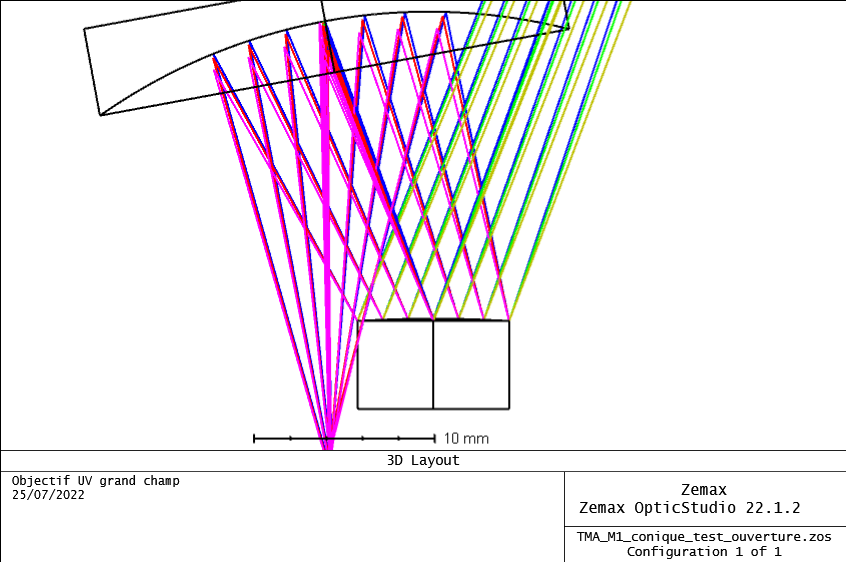I am designing a three-mirror off-axis system with the pupil (stop) located on the second mirror. I would like to increase the diameter of the pupil to decrease the aperture. So I would like to cut the left edge (picture) of my second mirror without losing too much flux.
I would like to know (if it is possible) the link between the aberrations (Seidel or Zernike coefficients) or the image spot in the image plane and the impact point of this ray on the pupil.
The goal is to place a rectangular aperture at the pupil.
I suppose that the extremal rays at the edge of the pupil have more consequences on the image spot than the rays in the axis?
Finally, is it possible to cut the pupil in 4 to observe the effects of each illuminated area.
Thanks in advance
Solved
Dependence of the impact area of the pupil on the system performance (aberration, RMS radius,...)
Best answer by Andrey.Pravdivtsev
It depends on your system. And it is quite easy to check. Set aperture on the mirror and compare different cases.
Enter your E-mail address. We'll send you an e-mail with instructions to reset your password.






